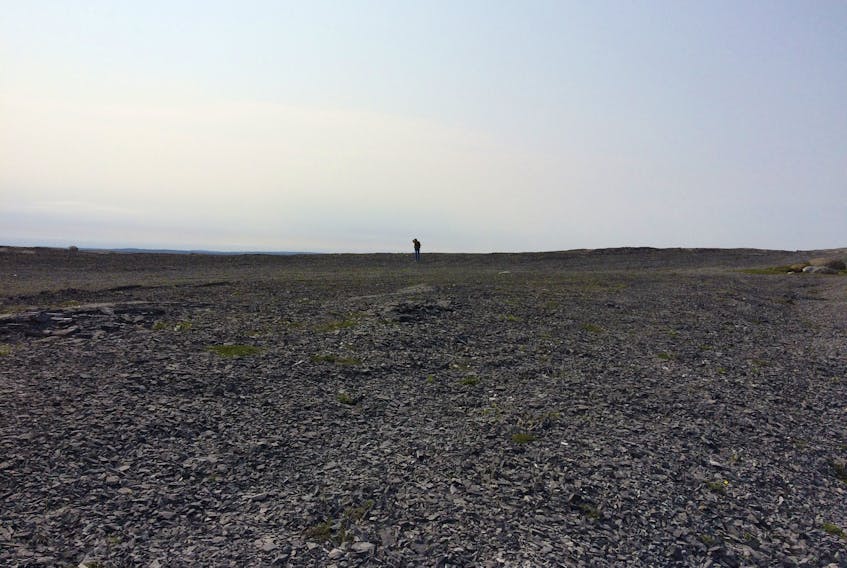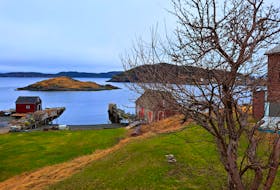It is very nearly the end of the line.
At one of the ends of the road on the tip of the Great Northern Peninsula.
You slide up the spine of the peninsula along Route 430 and I swear that with each passing mile, the trees get visibly smaller and more tightly packed together. What they lose in height, though, they make up for with sheer tenacity.

Past the roadside peat-black potato patches and vegetable gardens — past the rectangular piles of lobster pots resting for next season. Past the drying cords of firewood on the shoulder, and through the towns with their laundry lines and wind-whipped tourist-advertising towels and bedsheets, the wind snapping at the fabric while the sun beats down hard and unforgiving, too few things standing to cast regular shade.
After the inland turn at Eddies Cove, you can turn left onto Route 436 if you like and head for L’Anse aux Meadows and the Vikings: I like one more left, onto 437 towards Cape Onion, and then along the side of Pistolet Bay to Raleigh.
The harbour at Raleigh is sheltered, the town for the most part on the east side of the bay, overseen by the long finger of a point. At the bottom of the bay, a narrow isthmus, the harbour on one side, the sheltered waters of the top edge of Pistolet Bay — fine, flat and calm — on the other. And across from the town lies its sudden grey horizon, one of the most fascinating places on this island.
Burnt Cape hunches like a big grey whale — the road from the other side of the harbour peters out to little more than a track, and eventually you surrender and park, hiking up into the ecological reserve, the acres and acres of small smooth grey stones and the few things that can actually live there.
It’s not for everyone — it, as the provincial government points out, “has some of the most arctic conditions on the island.”
But if you love the idea of small, brilliantly colour flowers framed in grey rock, or patches of long-growing brilliant green plants with tiny leaves, in patches as distinctly formed as if they had been trimmed to look that way, the Cape is a wonder.
I’m a sucker for the concept of the simple horizon…
You can talk knowledgeably, afterwards, about whether or not you’ve found arctic bladderpod, alpine arnica, dwarf hawk’s beard and Burnt Cape cinquefoil.
I don’t even really know the names of anything, but I’m quite taken by single stalks of light-green succulents poking through the cracks of sharp grey stone, especially when those stalks bear, at their tops, an explosion of a flower, flame-orange. By mats of small-leaved dark green plants so tightly knit together that nothing else has a chance to interrupt their task of throwing up star-shaped buds that open and cast out single seeds capped with long white feathered hairs to catch the wind and carry the seeds aloft. By things that might be willows, if they had not been held down and spread across the ground, never more than an inch high, by the endless wind. This place is what resiliency looks like.
And the great long vistas of grey and flattened stone?
I’m a sucker for the concept of the simple horizon, whether it’s the dual components of sky and sea, or sky and snow, or sky and desert, I can be distracted for ages.
Burnt Cape? Sky and stone with a slight but permanent undulation.
A wonder of a place — almost every single thing seems as if you are the first person to have ever taken careful notice of it.
And you’re richer for that.
Russell Wangersky’s column appears in SaltWire newspapers and websites across Atlantic Canada. He can be reached at [email protected] — Twitter: @wangersky.








